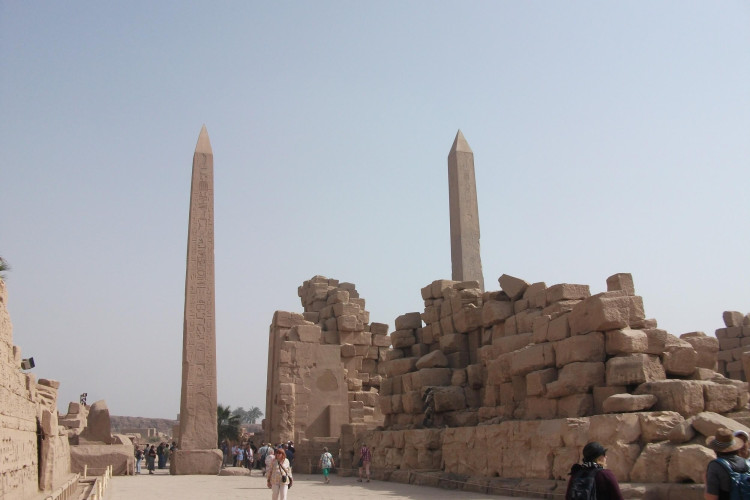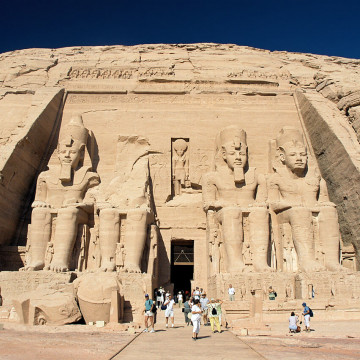Luxor Temple (Egypt) - ancient egyptian complex
Where is located Luxor Temple?
Address of Luxor Temple is Luxor, Thebes, Egypt
show on map
When was built Luxor Temple?
Built date of Luxor Temple is From 1408 onwards until 1300 BC

Facts, informations and history of Luxor Temple
The temple stands near the Nile River, along its bed. King Amenhotep III ruling in the years 1390 - 1353 BC he built this beautiful temple and dedicated it to Amon-Re, the king of all gods and son of Khonos. At the end of the complex there is a granite hall dedicated to Alexander Wielek.
The temple was used almost as a place of worship until now. She was completed by Tutankhamun and Horemheb and Ramses II, who added, among others, square with a colonnade.
During the Christian era, the temple was transformed into a church. For thousands of years she was buried under the street and houses of the city of Luxor. On the walls of some buildings, after traces of hardened salt, you can see how deeply the temple was underground.
The temple outside is decorated with columns, open squares, beautiful entrances, halls, wells, corridors and warehouses.
One of the striking things are two colonnades, 53 meters long, leading to the smaller courtyard of Amenophis. Each of the columns is 12.8 meters high.
The most popular view is the view of the Sphinx Avenue. They stand along the granite obelisk. It is one part of two, the second part of the monument is now in Paris. The sphinxes were made by Nectanebo, but he was not the only emperor who gave his own to this place. Badr al-Gamali, to celebrate his victories in 1077, built a mosque here.
A very accurate and symmetrical complex, over 250 meters long, was built according to a certain pattern, even later additions and additions were made according to the same guide.
In July 2001, after almost 2,500 years of standing in the Egyptian desert, nature would again flood the city of Luxor. Groundwater dangerously climbed up high, in some places there were only 6 feet under the foundations. Hydration and leaking sewers were considered the cause of this problem. Currently, the United States is spending $ 40 million to build a sewage system, avoiding this threat.
"A temple for magical rites, existing for two millennia, designed to evoke an understanding of creation and creation power in viewers." - John Anthony West
Architect of Luxor Temple
Construction/building type
Building Luxor Temple is of type Temple
Architectural style
Architectural style of Luxor Temple is Ancient Egyptian
Ancient Egyptian architectural style was specific to Egypt between 3150 BC and 395 AD and was uniquely characteristic of the country and its culture. Egyptian architecture was inspired by the landscape and climatic conditions of the region and by the ever-growing needs of the society. ... czytaj więcej.
What material is the building made of?
Luxor Temple is made of the following materials: Stone, granite
Other names
The building is also known by other common names or in the original language, i.e. Świątynia Luksorska
Official website
The official website of the building, where up-to-date information can be found, is http://www.luxoregypt.org
Photo gallery Add photo
Location on map / How to get there





























Comments to Luxor Temple (9) Average rating: 4,0 Add comment / Rate building
Based on 9 comments